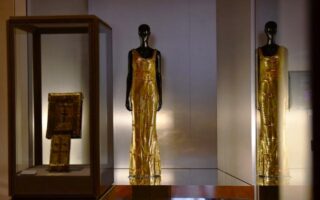Amedeo Modigliani at the Musée de l’Orangerie
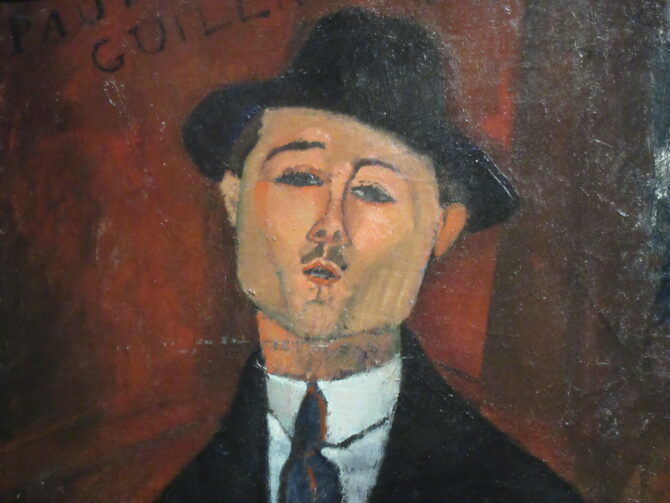
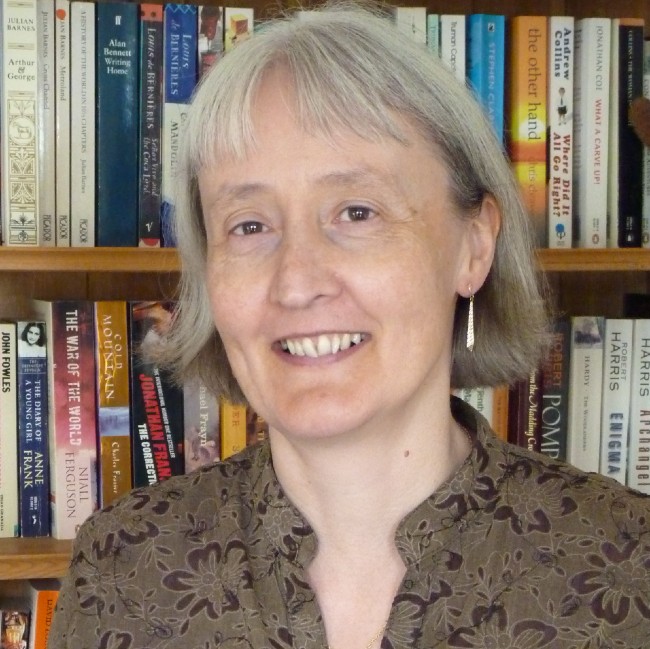
- SUBSCRIBE
- ALREADY SUBSCRIBED?
BECOME A BONJOUR PARIS MEMBER
Gain full access to our collection of over 5,000 articles and bring the City of Light into your life. Just 80 USD per year.
Find out why you should become a member here.
Sign in
Fill in your credentials below.
The Modigliani exhibition currently running at the Musée de l’Orangerie is bound to be a hit. This artist’s distinctive style is always a draw and lurid tales of his debauched and ultimately tragic life exert their own voyeuristic fascination. But this is something a little different because the curators have found a novel way to focus on his life and work, namely by viewing it through the lens of his relationship with Paul Guillaume, the art dealer who first helped him achieve sales and a modicum of recognition. It is, says the curator Cécile Gurardeau, a chance to put Modigliani “back into context.”
The exhibition opens with portraits of Guillaume, painted by Modigliani soon after the two men were introduced in 1914. Modigliani, at 30, was immediately taken with the 23 year-old would-be art dealer who rented a studio in Montmartre for him and began publicizing his work in artistic circles. The struggling artist sensed that this confident young man would provide a much-need impetus to his career and he painted him wearing a suit and tie, his hat perched on his slightly tilted head, as if he is just off to do a deal. Modigliani inscribed the portrait with the words novo pilota or “new pilot,” conveying his idea that this was a man to take him places.
Voir cette publication sur Instagram
The two men were drawn together by their shared love of African art. Modigliani had been visiting the Musée d’Éthnographie du Trocadero since about 1909 and was fascinated by the non-European art he found there. Since then, he had devoted himself to sculpture, rather than painting, and in the simple stone heads with elongated faces he produced, you can discern both the influence of African sculpture and the origins of the stylized faces he painted later. Guillaume, meanwhile, had developed a similar interest and had begun buying African masks and sculptures, first exhibiting them in 1914. He later built on this interest, organizing more exhibitions and publishing his study of Sculptures Nègres in 1917.
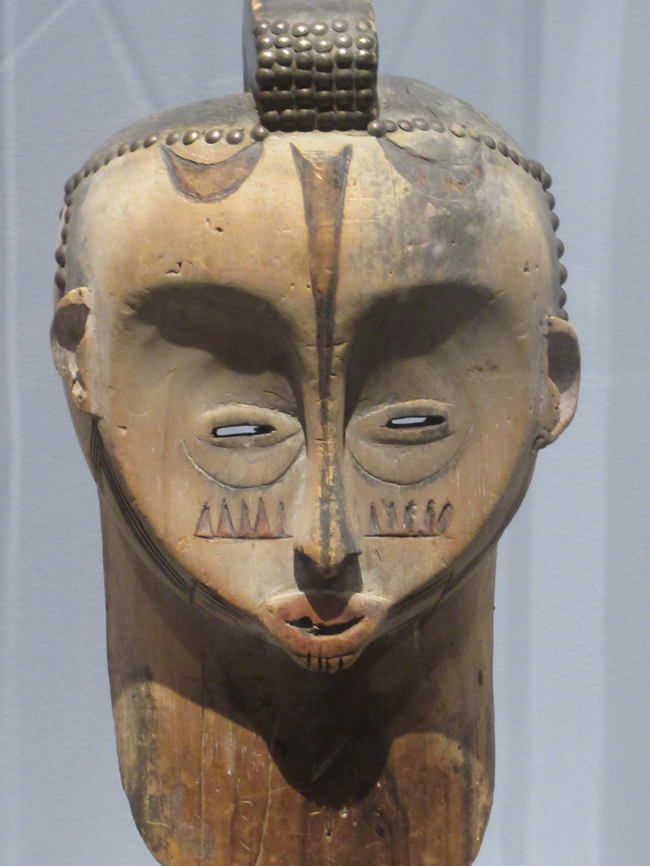
Mask from Gabon, showcased at the Orangerie’s exhibit on Amedeo Modigliani. Photo: Marian Jones
The first room of the exhibition, Masques et Têtes, explores the influence of non-western art on Modigliani’s work. African sculptures are shown alongside sculptures by Modigliani and some of his paintings, the works all echoing each other. The juxtaposition underlines the journey from the simple, clean lines of carved pieces from another culture through Modigliani’s own sculptures and into the long necks and smooth, oval faces with simplified features which characterize his paintings. Compare, for instance a wooden mask from Gabon, Modigliani’s sculpted Head of a Woman and his painting of Lola de Valence, all displayed in this room.
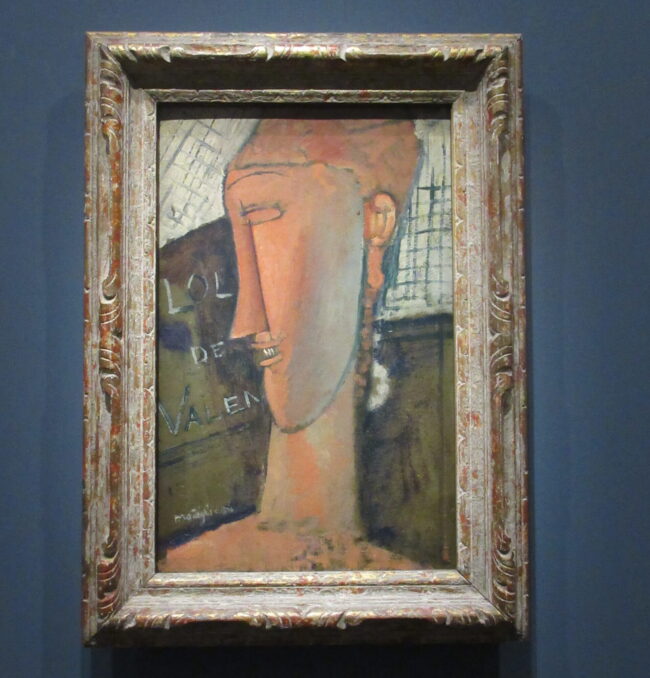
Portrait of Lola de Valence by Amedeo Modigliani. Photo: Marian Jones
The next section, Milieu Parisien, highlights another aspect of Guillaume’s influence, namely the fact that he smoothed Modigliani’s entry into artistic and literary circles in the Paris of World War I. The two men were originally introduced by the poet Max Jacob, whose portrait by Modigliani is one of the highlights here. Others who sat for Modigliani during this period – not all exhibited here – include Jean Cocteau, Picasso and the infamous cabaret dancer, Kiki de Montparnasse. There’s a poignancy to the theme illustrated in this room. Modigliani and Guillaume enjoyed a bohemian existence among the artistic elite of the time, yet both men had been declared medically unfit to fight and went on to die young, Modigliani at 36 and Guillaume in his early 40s.
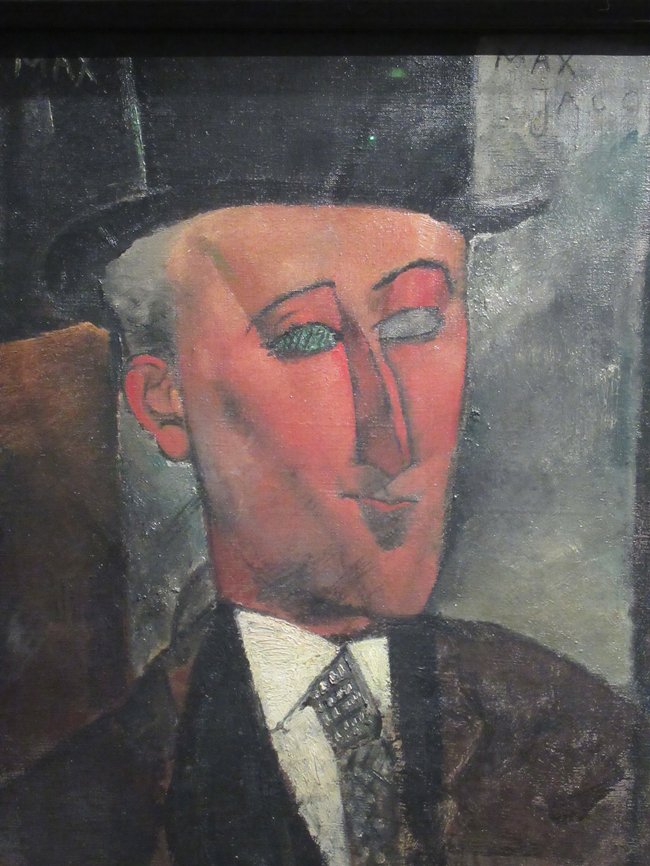
Portrait of Max Jacob by Amedeo Modigliani. Exhibit photo: Marian Jones
The largest room in the exhibition covers the Période Méridionale, which Modigliani spent in the south of France. It’s an interlude in the story of Modigliani and Guillaume, because by 1918 the artist had begun a relationship with a second art dealer, Léopold Zborowski, who rented a studio for him and paid fees to the models who sat for him. The artist stayed friendly with Guillaume too – there are photos of them together on the seafront at Nice in 1918 – but their working relationship was now less exclusive.
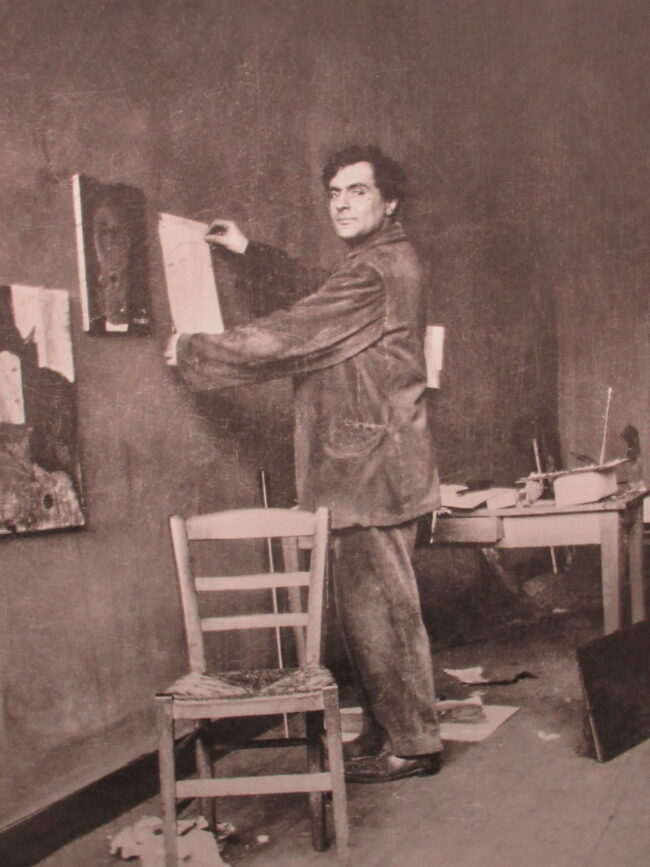
Modigliani in his studio, photo featured at the Orangerie exhibition.
Anxious about the artist’s failing health, Zborowski encouraged him to go south in search of a more favorable climate. Modigliani complied, and the time spent in Nice is marked by an evolution in his painting style. The brighter colors, reflecting the light of Provence, and more delicate touch, can be seen here in pieces displayed against a background of pale terracotta-colored walls. Examples include Young Redhead with a Necklace, Pink Blouse and Woman in a Striped Blouse. Here too are pieces illustrating another much more controversial aspect of Modigliani’s work, his series of 30 or so paintings of nude women. These also owed more to Zborowski than to Guillaume.
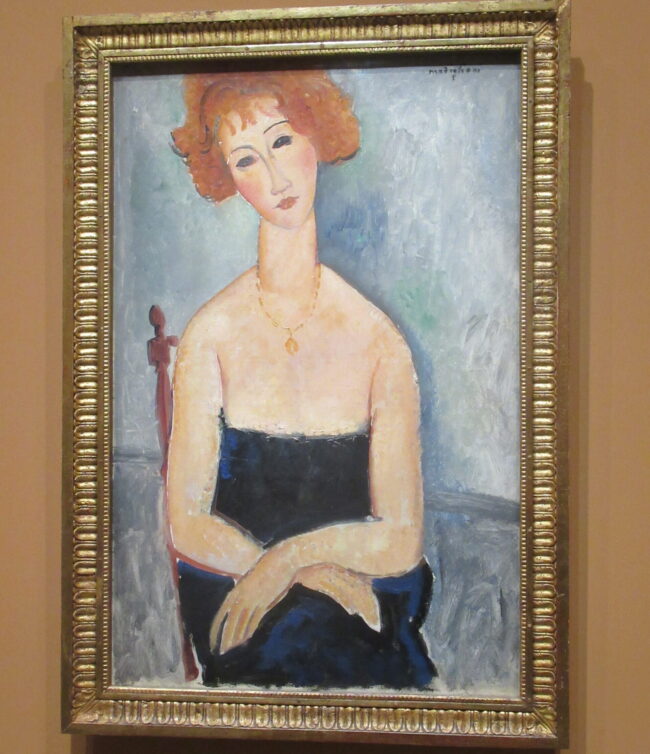
“Young Redhead with a Necklace” by Amedeo Modigliani. Exhibit photo: Marian Jones
These nudes, only some 10% of Modigliani’s total output, have attracted much attention ever since and indeed in 2015 one was auctioned in New York for over 170 million dollars, making it one of the most expensive paintings ever sold. Reclining Nude, exhibited here, is typical of the series, sensuous, rounded forms depicted in warm, bright colours, which were later deemed to be among Modigliani’s best works. When they were displayed in 1917, his first – and only – solo exhibition, outrage was swift, largely because, unlike traditional paintings of nude women until then, they showed the models’ pubic hair. The show was deemed obscene and closed by the police on its first day, although it re-opened less publicly afterwards.
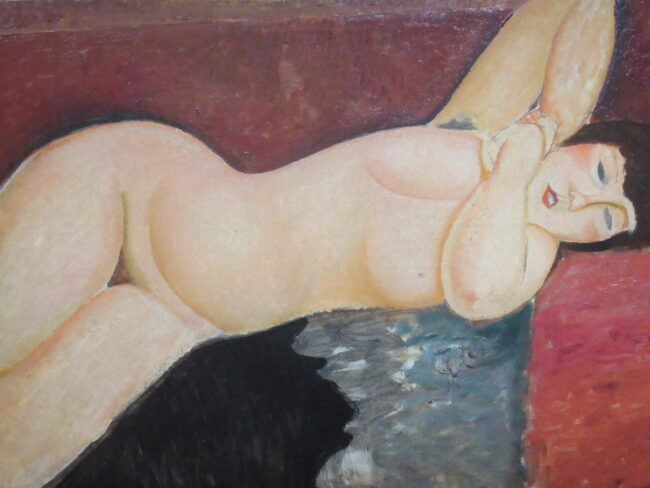
Reclining Nude by Amedeo Modigliani. Exhibit photo by Marian Jones
In the final room, the exhibition reverts to Paul Guillaume. Enlarged photographs of his homes are projected onto the walls and we see that over his career, Guillaume was able to move into ever more expensive apartments, from the modest three-roomed one he rented in the early days to the lavish home in the 16th arrondissement which he bought in 1934, the year of his death. It is clear from the artworks covering the walls that Guillaume owned one of the most innovative art collections in Paris, ranging from modern to classical and from European to non-western. These are more evidence of his wealth, for by the end of his life he owned paintings by such well-known artists as Picasso, Matisse, Renoir and Cézanne.

Paul Guillaume et Amedeo Modigliani à Nice en 1917, Musée de l’Orangerie
Modigliani’s works feature prominently too. Guillaume was an art dealer with a taste for many different styles, but he always retained his admiration for the works of his early protégé. After Modigliani’s death in 1920, Guillaume continued to promote his work, both in France and abroad and he featured it a number of times in the review he published, Les Arts à Paris. During the six years that they knew each other, over 100 of Modigliani’s paintings, as well as drawings and sculptures, passed through Paul Guillaume’s hands.
Everything included in this exhibition links Guillaume to Modigliani, having been bought, sold or written about by him. Their relationship was much more than merely transactional, for they shared a friendship too, but the key fact highlighted by the curators is how influential Guillaume was on Modigliani’s career as an artist. He recognized Modigliani’s talent as soon as they met, encouraged him, supported him financially, introduced him to other artists and championed his work for the rest of his life.
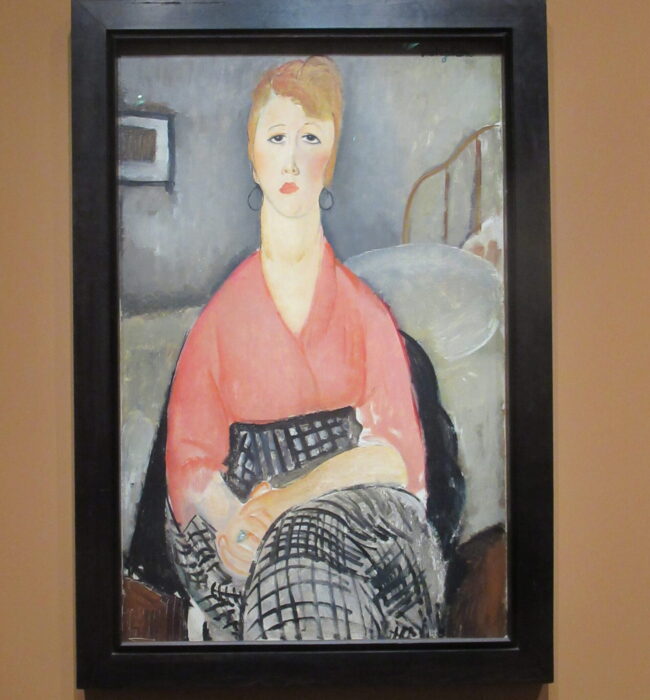
“The Pink Blouse” by Amedeo Modigliani. Exhibit photo by Marian Jones
The drama and debauchery of Modigliani’s life has sometimes seemed to distract from his work. This exhibition centers on his art, highlighting the major influences on his style and introducing to a wider public the man who first appreciated his talent, did so much to promote his work and described his protégé and friend as “a great painter among the greats.”
DETAILS
Amedeo Modigliani. A Painter and his Dealer
At the Orangerie until January 15th, 2024
Open 9 AM – 6 PM every day but Tuesday
Full price entry €12.50, concessions €10
Lead photo credit : Portrait of Paul Guillaume by Amedeo Modigliani. Exhibit photo by Marian Jones
More in Amedeo Modigliani, Art, Montmartre, Musée de l’Orangerie, Paul Guillaume, People, sculpture


